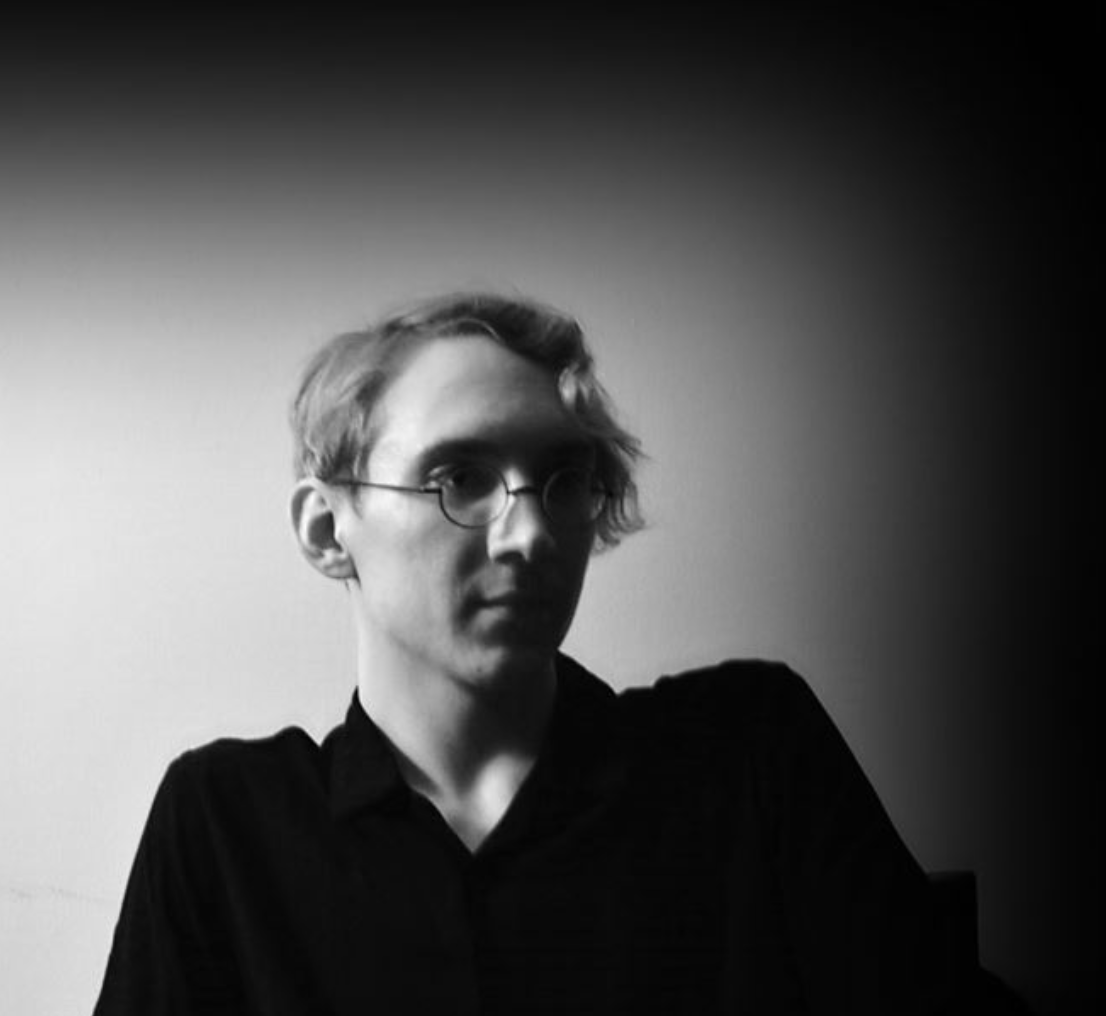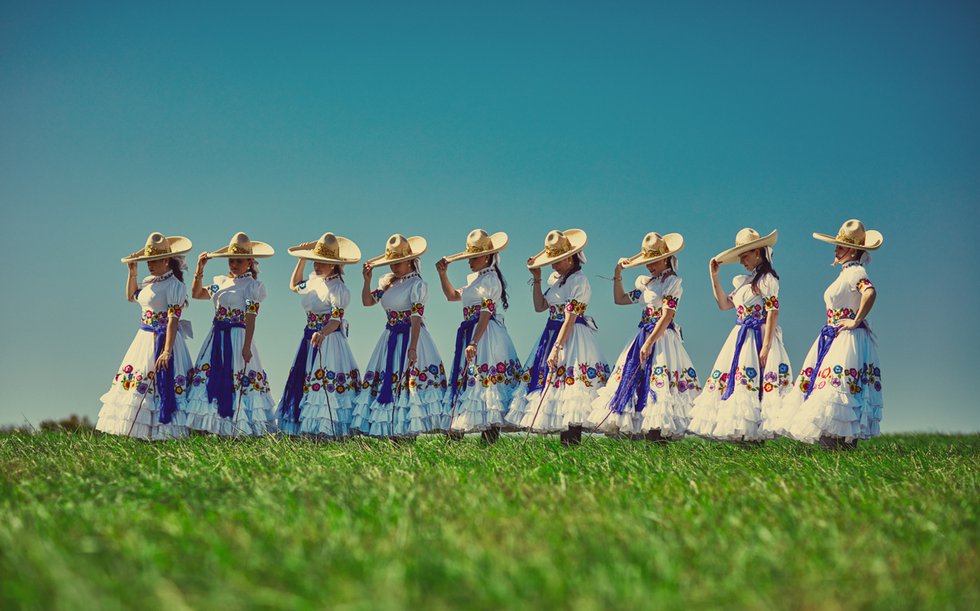An interview with the artist who fuses words and art in this lyrical installation.

Incanto: An Oasis of Lyrical Sculpture, a dynamic art installation at Lewis Ginter Botanical Garden in Richmond, runs through October. Created by Falls Church-born artist Kate Raudenbush and New York-based poet Sha Michele, the installation is a dialogue between sculpture, written language, and the surrounding landscape. “Garden guests of all ages have been enchanted with Incanto’s stunning sculptures,” says Beth Anne Booth, director of exhibitions at the garden.
Each of the five art pieces—Resonant Passage, Source Code, Seed of Self, Breaking Point, and Ancestors—range from pyramids to circular gateways and are spread throughout the garden’s 50 acres. “These welcoming sculptures are reflective and thoughtful,” says Raudenbush. “They invite an internal journey for the viewer.”

Resonant Passage in the Sunken Garden is a tall pyramid with a pair of arced stairways meeting at the apex. It rests in a pool, where water is pumped to the top and glides down the stairs. And like the other sculptures, at night it lights up in beautiful blues, golds, and reds.
Raudenbush says she wants people to interact with her work—to touch and walk through each one. And the poems accompanying each one also invite the readers to pause and contemplate what the sculptures mean. Incanto is at LGBG through Oct. 29, with extended evening hours and occasional special events with music, yoga, meditation, and more. LewisGinter.org
Interview:
Konstantin Rega: Your five metal sculptures at Lewis Ginter Botanical Garden are beautiful. What was the thought and design process behind their creation and the collaboration with the Garden?

Kate Raudenbush: It’s been a real joy making art with Lewis Ginter Botanical Garden. I got this commission just before the world shut down and the pandemic hit. And the show that I thought I could create suddenly became a much deeper depiction about contemplation, with more existential themes.
I thought, how can I create artwork that meets nature where she is a healer, a healing space? And the answer for me was to create sculptures that felt very reflective and thoughtful and that created an internal journey, that invited an internal journey for the viewer. So the sculptures of Incanto are a healing space within a healing space.
Seeing the sculptures, there’s a sense of movement from one side to the other—as in you could pass through them. Was this idea of interacting with the pieces paramount?
It’s very intentional, yes. I wanted the artwork to feel welcoming and not just an object to stare at and not touchable. That’s what creates a personal experience for the viewer.
Also, it was important for me to also create descriptive panels. There are two for each of the sculptures. One of them is my description of the artwork as I conceived it because it’s very conceptual, very allegorical. And then the other is the poem written by Sha Michele, in resonance with the sculpture.
So it’s not only a dialogue of two art pieces (physical and written), but one with a third person—the viewer—and, further, a dialogue with nature, which is the container for it all. When you read the intention of an artwork—any artwork, not just my artwork—your understanding really grows. And so you bring your own understanding to the piece, your own story as well.
Each sculpture is in a different location throughout the grounds. How did you draw inspiration from each specific setting?
I visited the garden multiple times before I conceived these art pieces, really getting a feel for the landscape and how people walk through the garden. What are the passageways? What are the quiet places where stillness is encouraged?
When I saw the fountain in that beautiful sunken garden with the pool, I knew right away that I had to make an artwork incorporating water as a sculptural element. And not just sitting stagnant either but creating a fountain where the water is drawn up through the center of the sculpture and cascaded down those giant arcs of stairs.
So that was a huge challenge, but a welcome one. I love doing things that I don’t know exactly how to do. That’s the creative process, right?
Going back to the start of your career, what first inspired you to try your hand at art and to become a professional artist?
For me, using one’s creativity in service of ideas that you can share with others and have them enjoy an experience that elevates their consciousness, that’s what I wanted to do from a very young age.
It never felt like a career move; it just felt like who I was. I’m an artist, and there’s no escaping it. I think everyone is creative—that is the nature of life and humanity. And creativity can take many forms, from writing to performance to dance to anything. But for me, I also had a real connection to the earth. As a kid, I was a bit of a tree hugger.
In my work, I also consider how creativity can be a diplomat of peace, a healer; how art can be a healing force. In the past, you’ll see a theme of humanity’s relationship with itself. And with the Earth. As well as ideas around our imbalance with technology, and how we try to find that balance between our species and this planet.
Making art that exhibits a real consciousness, that questions reality, or puts forth deep concepts that are contemplative and inclusive, that’s what’s needed in the world. I can’t just make navel-gazing stuff. I want to make art that addresses some breaking point. I want it to address very pressing themes about how struggle reforms a person’s identity, and how we’re all trying to find the light in our darkness—personally and on a humanitarian scale.
Though you worked with sculpture before, for this exhibit, what drew you to that medium?
I used to be a professional photographer for many years in New York. And I photographed a lot of theater, a lot of performance art. In 1999, I went to Burning Man, for the very first time. And I started photographing and attempting to capture it. But it’s something that needs to be experienced.
I thought, I’m just observing it, and I can’t capture it properly. So how could I give back to all this creativity and be part of this community? So a few years later in 2004, I challenged myself to make a sculpture and bring it to Burning Man. I also applied for a grant, and they gave it to me having absolutely no sculpture experience. I went to art school to be a fashion designer.
But I created it with intention, and let them fill it with their own meaning as well. And that, to me, felt really satisfying. Burning Man supported my career for four years. And then in 2009, I started making artwork for other festivals and other creative producers.
Now I’ve done work in Washington, D.C., Montreal, Tulu, Mexico, Seoul, Amsterdam, Miami, all over. And what I love about art is that it really is an international language. You don’t have to know an enormous amount about it to love it. Or even know this or that language to love art.
How did you feel at the end of this experience, this creative process, seeing them in the garden?
It was really wonderful. There was just so much joy. I remember the first time we turned the water on the fountain and we were just all jumping around excited. I just love creating and inviting other people along this contemplative journey. It’s been an incredible honor so far.
And they’re curating events every month. So we’re really bringing in and activating the space with community and events and music. We had fire spinning recently and jazz another time.
Seeing the sculptures at different times is very different. How does light, natural or electric, play into Incanto?
I always think of light as intrinsic to the artwork. Even though I don’t consider myself a light sculptor, I feel like illumination can give a piece a whole different personality and experience for the viewer. And it’s a completely different experience when you see the sculptures at night.
I wanted to give people not just, Oh, look at the pretty artwork. It’s an experience of art. It allows you a space to drop into yourself—to go on a journey within. And that’s the kind of gift I want to give to people visiting the sculptures at night, or at any time really.
The garden always closed at five before. But because of the illumination aspect, they created extended viewing hours Wednesday through Saturday, from nine to five. This actually opens up the garden to a new audience, too. Because not everyone is available; they’re working during the day. So a lot of people miss seeing the garden then. In the evening, I really wanted to create a new magical experience. When you see them then, they really do feel like a portal to another world.
I had a complete stranger, email me through my website, telling me she loved the show at night and that she was very moved and cried. So I really feel like art can be a conduit for so much personal evolution and joy.








